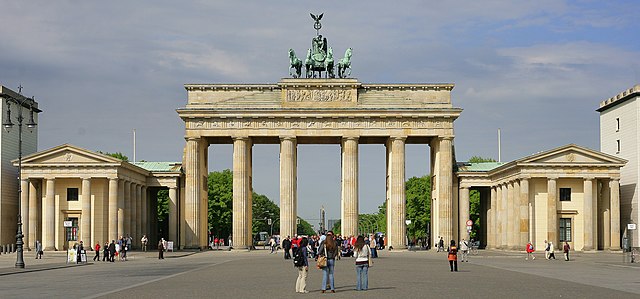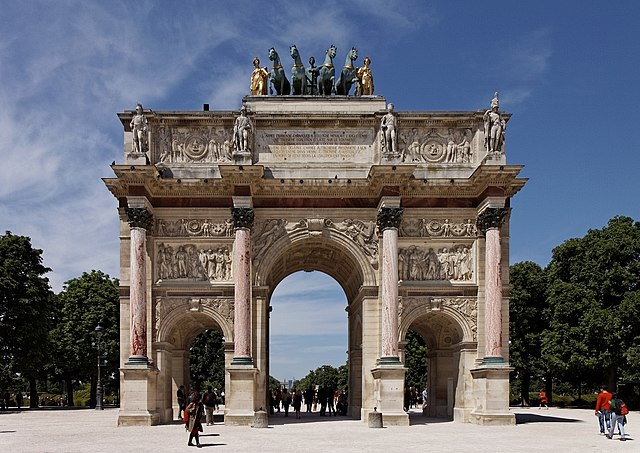Neoclassical architecture
Neoclassical architecture, sometimes referred to as Classical Revival architecture, is an architectural style produced by the Neoclassical movement that began in the mid-18th century in Italy, France and Germany. It became one of the most prominent architectural styles in the Western world. The prevailing styles of architecture in most of Europe for the previous two centuries, Renaissance architecture and Baroque architecture, already represented partial revivals of the Classical architecture of ancient Rome and ancient Greek architecture, but the Neoclassical movement aimed to strip away the excesses of Late Baroque and return to a purer, more complete, and more authentic classical style, adapted to modern purposes.
Image: West facade of Petit Trianon 002
Image: Berlin Brandenburg Gate overwiev
Image: Paris Jardin des Tuileries Arc de Triomphe du Carrousel PA00085992 003
The Basilica Palladiana at Vicenza in Veneto, Italy
An architectural style is a classification of buildings based on a set of characteristics and features, including overall appearance, arrangement of the components, method of construction, building materials used, form, size, structural design, and regional character.
The Architect's Dream by Thomas Cole (1840) shows a vision of buildings in the historical styles of the Western tradition, including ancient Egyptian, ancient Greek, ancient Roman, and Gothic.





